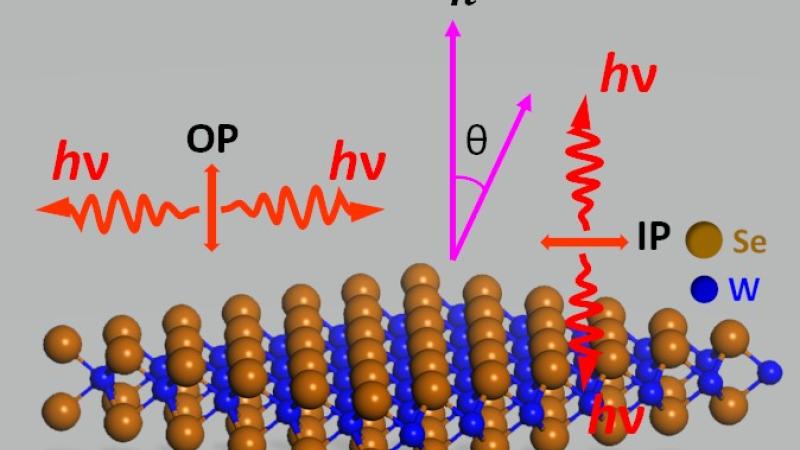October 14, 2019

Finding new ways to manipulate existing materials is essential to enabling quantum information processing and storage.
In research recently published in Nano Letters, a team at Rensselaer Polytechnic Institute demonstrated a new way to manipulate tungsten diselenide (WSe2) — a promising two-dimensional material — to further improve its computing and information storage potential.
“Our goal is actually to find a particle that has both a quantum degree of freedom and can also live long enough so that it can have practical application,” said Sufei Shi, an assistant professor of chemical and biological engineering.
In WSe2, unlike in a traditional semicondictor, electrons and holes — a quasiparticle used to describe the absence of an electron, and which also holds the opposite charge of the electron — strongly bond together and form a charge-neutral quasiparticle called an exciton.
In a previous publication in Nature Communications, Shi and his team discovered a special “dark” exciton that typically can’t be seen but has a longer lifetime. Its challenge is that the “dark” exciton lacks the “valley-spin” quantum degree of freedom — an expanded freedom of movement for particles that appears promising for quantum computing.
In this research, the team added a positively or negatively charged particle to the dark exciton to create a new quasiparticle, one that they have more control over. For example, by controlling the voltage, the team could manipulate the dark exciton in a way that restores a quantum degree of freedom. The process, known as gating, is currently used in semiconductors, making this approach very practical for application.
“In this case we don’t have to invent the technology; everything is here,” Shi said. “The new particle is new, but the way to control it is actually very compatible with the current semiconductor technology.”
In order to observe this quasiparticle, Shi and his team couldn’t use traditional methods. The dark exciton does not interact well with light, making it difficult to measure. The researchers had to develop their own technique in the lab to measure the radiating angle of the quasiparticle, obtaining information in the momentum space.
This paper was published in collaboration with researchers from the City University of New York and the National High Magnetic Field Laboratory.